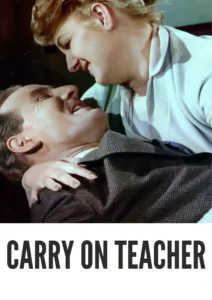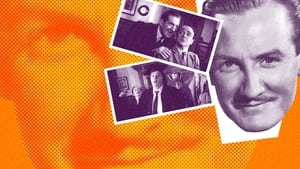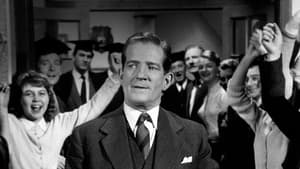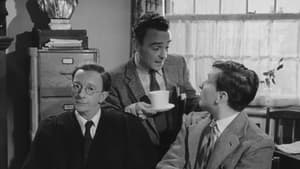Video Sources 0 Views

Download Carry On Teacher (1959) Colorized HD | Ted Ray | Kenneth Connor | School Comedy Classic
Synopsis

Step back into the halls of Maudlin Street Secondary Modern School with Carry On Teacher, a side-splitting British comedy from 1959, now brilliantly colorized for a fresh and engaging viewing experience. This film, directed by Gerald Thomas, features a stellar cast including Ted Ray and Kenneth Connor, and delivers a charming blend of wit, slapstick, and heartwarming moments within the chaotic environment of a bustling school. Perfect for fans of classic comedies and those seeking a lighthearted escape, this HD download brings a beloved piece of cinematic history to your screen. If you loved the original, you might also enjoy similar titles of the time, titles that were also colorized, titles like “Carry on Nurse” and “Carry on Constable”, also by Gerald Thomas.
Carry On Teacher revolves around William Wakefield (Ted Ray), a long-serving acting headmaster who dreams of leading a brand-new school. Just as he applies for the coveted position, a Ministry of Education Inspector, Miss Wheeler, and child psychiatrist, Alistair Grigg, arrive for a crucial visit.
Hoping to impress the inspectors, Wakefield enlists the help of his dedicated staff, including Gregory Adams (Kenneth Connor), the nervous science master, and Edwin Milton (Kenneth Williams), the flamboyant English master. However, the students, led by the mischievous Robin Stevens, overhear Wakefield’s plans to leave and hatch a plan to sabotage his chances, fearing they’ll lose their beloved headmaster.
As Grigg and Miss Wheeler tour the school, the pupils go out of their way to create chaos, hoping to tarnish Wakefield’s reputation. Amidst the mayhem, romantic sparks fly between Grigg and the gym mistress, Sarah Allcock (Joan Sims), while Miss Wheeler develops a soft spot for the awkward but endearing Adams.
Wakefield realizes his future is on the line and enlists Adams to charm Miss Wheeler. Meanwhile, the students’ antics escalate, leading to a showdown on prize-giving day. In a heartfelt moment, Wakefield learns the true reason behind the students’ behavior and makes a life-changing decision.
The film boasts a talented ensemble cast that brings the quirky characters to life:
-
Ted Ray as Mr. William Wakefield
-
Kenneth Connor as Mr. Gregory Adams
-
Charles Hawtrey as Mr. Michael Bean
-
Leslie Phillips as Mr. Alistair Grigg
-
Kenneth Williams as Mr. Edwin Milton
-
Hattie Jacques as Miss Grace Short
-
Joan Sims as Miss Sarah Allcock
-
Rosalind Knight as Miss Felicity Wheeler
-
Richard O’Sullivan as Robin Stevens
Carry On Teacher falls squarely into the school comedy genre, with elements of slapstick, wit, and heartwarming charm that define the best of British comedic cinema.
Released in 1959, Carry On Teacher offers a nostalgic glimpse into post-war British society, reflecting the changing attitudes and social dynamics of the era. The film’s depiction of school life, with its eccentric teachers and mischievous students, resonates with audiences familiar with the British education system. While Carry On Teacher may not be a historical drama, it provides valuable insights into the cultural landscape of 1950s Britain, making it a fascinating time capsule for modern viewers.
This colorized version of Carry On Teacher has been carefully restored using state-of-the-art digital techniques, enhancing the visual experience while preserving the film’s original charm and humor. The colorization process involved meticulous analysis of the grayscale tones of the original black and white footage, with careful consideration given to historical accuracy and aesthetic appeal. The techniques employed included advanced algorithms for color palette selection, image enhancement, and noise reduction, resulting in a vibrant and engaging viewing experience for modern audiences. Whether you’re a purist or a newcomer to classic cinema, this colorized version of Carry On Teacher offers a unique opportunity to rediscover a beloved British comedy.
The school in the film, Maudlin Street Secondary Modern School appears in the book The Boy in the Dress by David Walliams.
-
: Gerald Thomas
-
: Norman Hudis
-
: Reginald H. Wyer
-
: Peter Rogers
-
: Peter Rogers Productions, Beaconsfield Productions
-
: Anglo-Amalgamated Film Distributors
-
: 86 minutes
-
: MP4
-
: HD (1080p)
-
: Compatible with most devices, including smartphones, tablets, computers, and smart TVs.
Upon its release, Carry On Teacher was well-received by critics and audiences alike, praised for its witty script, memorable characters, and infectious humor. The film’s success led to a long-running series of Carry On comedies, cementing its place in British cinematic history. Whether you’re a longtime fan or a newcomer to the series, Carry On Teacher remains a delightful and enduring example of classic British comedy.
-
: What is Carry On Teacher about?
-
A: Carry On Teacher is a comedy about a headmaster who tries to impress an inspector while his students sabotage his efforts.
-
-
: Is Carry On Teacher (1959) part of a series?
-
A: Yes, Carry On Teacher is the third film in the Carry On series, which includes over 30 films.
-
-
: Is this version of Carry On Teacher colorized?
-
A: Yes, this version has been professionally colorized to enhance the viewing experience.
-
-
: What makes Carry On Teacher a classic?
-
A: Carry On Teacher is a classic for its witty humor, memorable characters, and nostalgic portrayal of British school life.
-
-
: What is the download format?
-
A: The download format is MP4, which is compatible with most devices.
-
-
: What resolution is the download?
-
A: The resolution is HD (1080p), providing a high-quality viewing experience.
-
Experience the Laughter – Watch Carry On Teacher Today!














